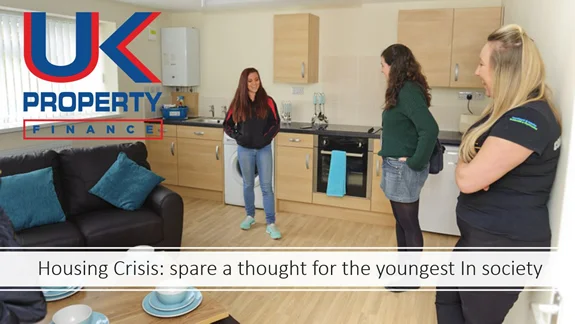Housing Crisis: Spare a Thought for the Youngest In Society

The housing crisis in the United Kingdom means different things to different people. For some, skyrocketing property prices are playing directly into their hands and, indeed, their pockets. For others, it’s a case of accepting the stark reality that homeownership is unlikely at best.
Research suggests that approximately 90% of young people in Britain intend to own their own home at some point. Unfortunately, research from Santander suggests that only one in four young Britons (26%) will be on the property ladder by 2026.
This contrasts starkly with figures from 2006, at which time approximately half of young Britons (under the age of 34) owned their own home.
Of course, none of this will come as a real surprise to younger generations in the United Kingdom. The combination of astronomic property prices and stagnant wages has made the dream of homeownership an unlikely reality for most. Precisely why more than 70% of millennials believe that their chances of owning their own home are slim to none.
An escalating issue
With the state of the UK housing market as it is, fewer would-be first-time buyers than ever before are making concerted efforts to get on the property ladder. Research suggests that only 42% have anything put away to cover the deposit on a prospective property. Interestingly, of those who had earmarked savings for a deposit, men were found to have saved twice as much as women.
While the men polled who had deposit savings put away had an average of £11,600, the women polled had saved an average of £5,620. Across both gender groups, the average target amount for those saving towards a property purchase was £24,000.
Had they managed to hit this target, which the vast majority didn’t, they would still have fallen short of the required funds to buy a home. Today, taking out a mortgage on an average property in the United Kingdom means coming up with a deposit of £44,000. For most everyday earners, this is simply out of the question.
In 1996, approximately 65% of people on low to medium incomes (between £20,000 and £30,000) owned a home. By 2016, this had fallen to just 27%.
Today, it’s estimated that around 65% of homebuyers have incomes of more than £40,000—significantly higher than the national average. Salaries have been rising on average by a mere 18% over the past decade, failing to maintain pace with average house prices, which are all around 47% for the same period.
Speaking on behalf of Santander Mortgages, managing director Miguel Sard acknowledged the difficulty facing an entire generation of first-time buyers.
“It’s clear that while the aspiration to own a home is just as strong as in previous generations, it’s a dream that is looking increasingly out of reach,” he said.
“Without change, homeownership in the UK is at risk of becoming the preserve of only the wealthiest young buyers over the next decade. This report should be a wake-up call for industry and the government to think more creatively to keep the homeownership dream alive for the next generation of first-time buyers.”
With conventional purchase channels all but closed, more first-time buyers than ever before are turning to friends and family for help. In fact, the study from Santander suggests that almost 40% of all first-time buyers now rely on support from parents and grandparents to purchase their homes.
In the meantime, the number of British people taking on second homes as buy-to-let properties is reaching an all-time high, having doubled since 2001. As wealthier Brits continue to capitalise on sky-high property prices and accelerating rental yields, an entire generation risks being priced out of the market. All attempts by the government to address the issue (Help to Buy, lifetime ISAs, etc.) have so far been criticised as inadequate or simply not fit for purpose. Unless more drastic action is taken, the issue is only predicted to continue worsening over the years and decades to come.
